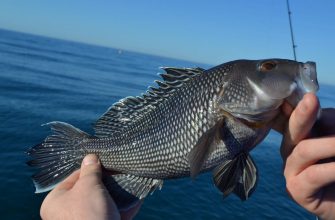It was a crisp morning in Montana as I arrived at the Bighorn River, eager to test my fishing skills and hopefully catch some rainbow trout. The river was calm and clear, allowing me to see the fish swimming beneath the surface. Excitement coursed through my veins as I rigged up my fly rod with a nymph and began casting.
I quickly realized that the water was shallow and the fish were easily spooked, so I knew that I had to be stealthy if I wanted to have any chance of catching them. I moved slowly and quietly along the riverbank, scanning the water for any signs of feeding fish.
It didn’t take long for me to spot a large rainbow trout feeding near the edge of the river. I carefully positioned myself downstream from the fish and cast my nymph just in front of its nose. To my surprise, the trout took the bait almost immediately, and I felt the tug on my line. I set the hook and began reeling in the fish, which fought hard against the line.
After a few minutes of intense struggle, I finally landed the beautiful rainbow trout. Over the course of the day, I caught several more rainbow trout using a variety of flies and techniques. I experimented with different presentations and retrieves, and learned to read the water to find the best spots to cast.
As I continued fishing, I realized that the technique that worked best for me was using a double nymph rig with a small indicator. This allowed me to keep the nymphs close to the bottom of the river where the fish were feeding, and the indicator helped me detect subtle strikes.
![]()
The Bighorn River is known for its finicky fish, so it’s important to pay attention to the smallest details. Using a long leader and tippet, typically around 9-12 feet in length, and a light fluorocarbon tippet can avoid spooking the fish. Additionally, choosing the right flies is crucial. In addition to the standard patterns like Pheasant Tails and Hare’s Ears, I had success with smaller midge patterns in sizes 18-22.
One thing that really made a difference for me was taking the time to observe the river and the behavior of the fish. I noticed that the fish tended to be more active in the mornings and evenings, and that they were more likely to feed in certain areas of the river. By paying attention to these details, I was able to adjust my approach and increase my chances of catching fish.
For anyone looking to fish the Bighorn River, I highly recommend bringing a selection of nymphs and dry flies, as well as a good pair of waders and a wading staff. The river can be deep and fast-moving in some areas, so it’s important to take precautions and stay safe.
Fishing the Bighorn River for rainbow trout was an unforgettable experience that tested my skills and rewarded me with some beautiful catches. If you’re a seasoned angler looking for a new challenge, I highly recommend giving the Bighorn River a try. Just be prepared to put your skills to the test!
